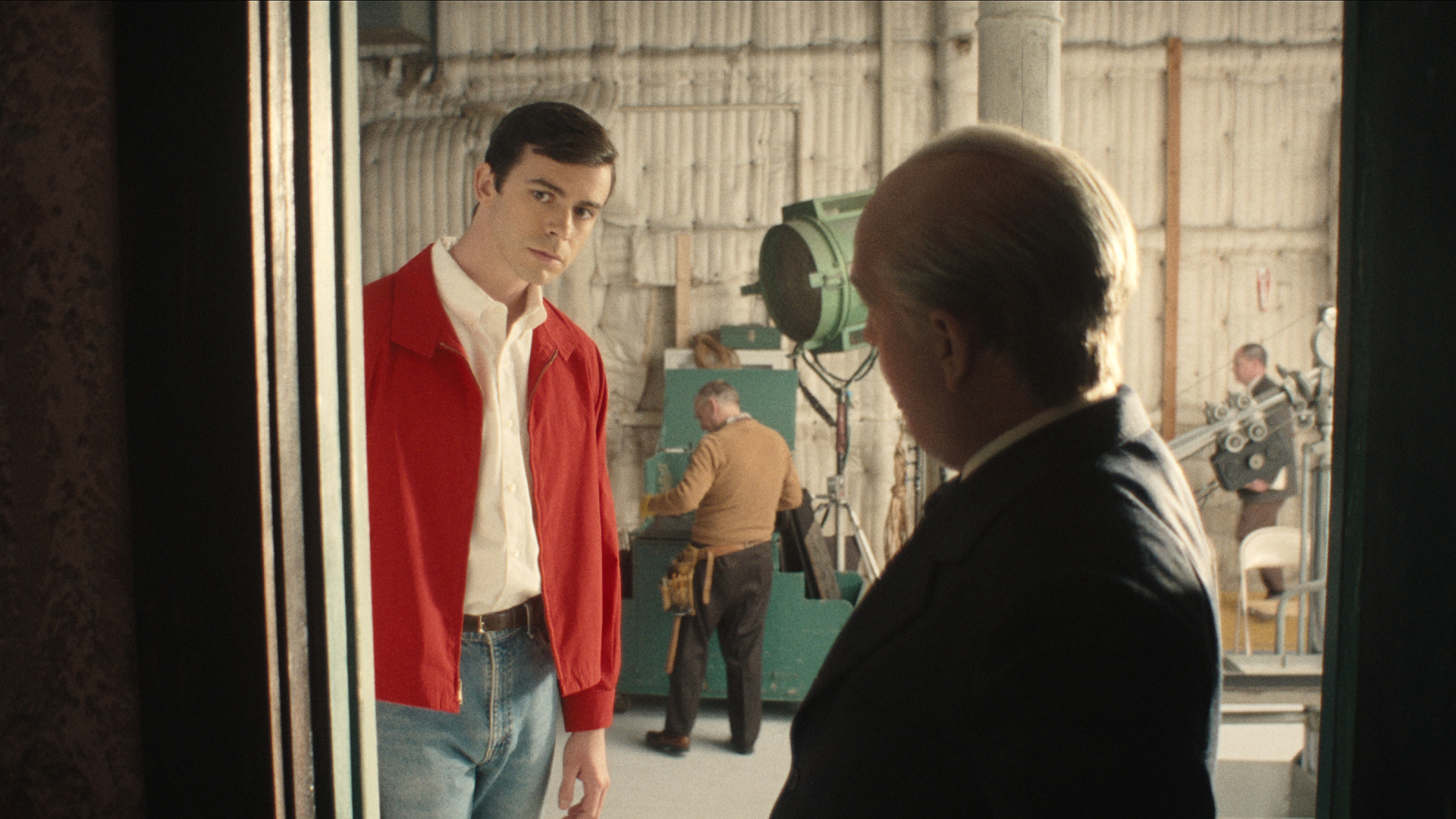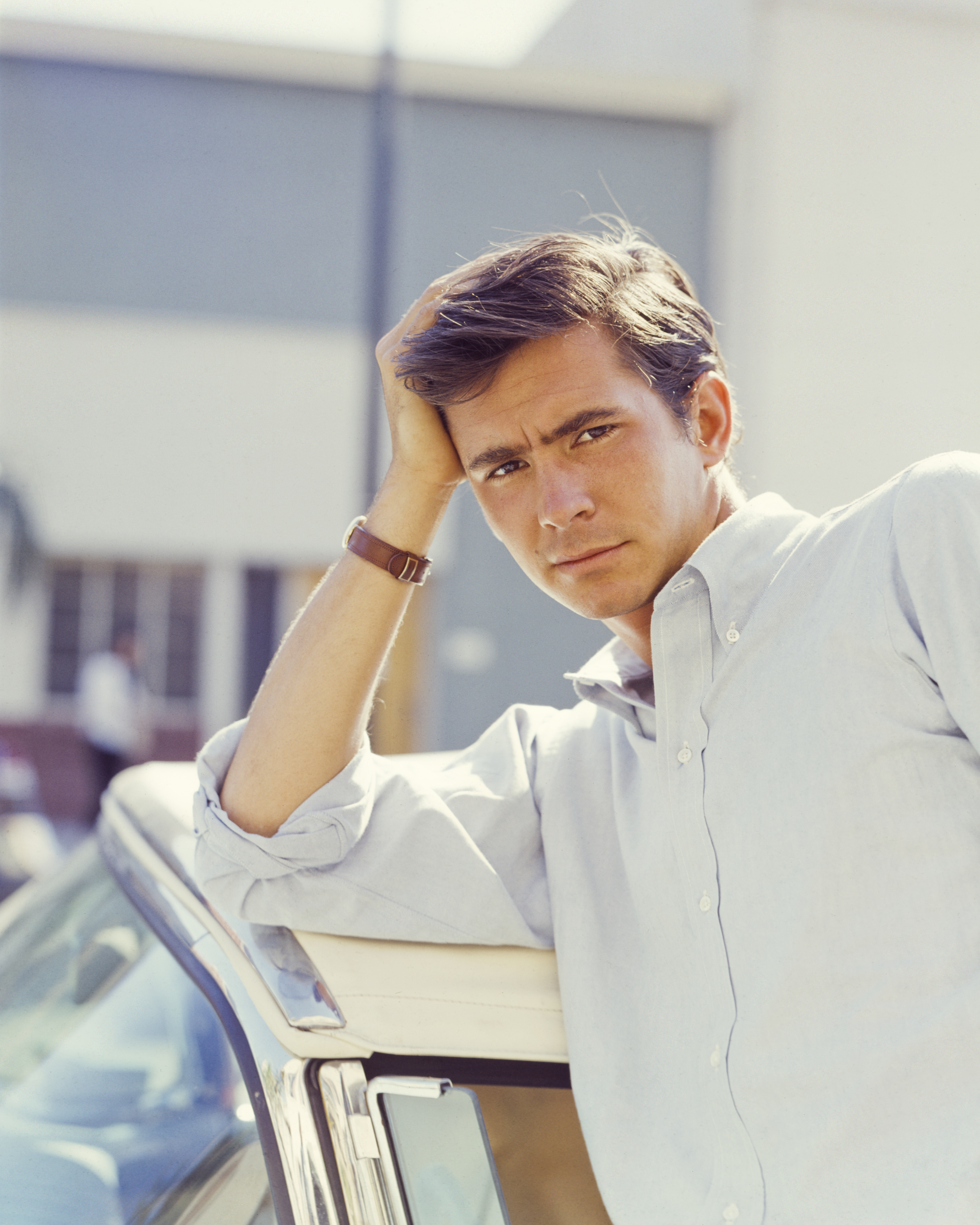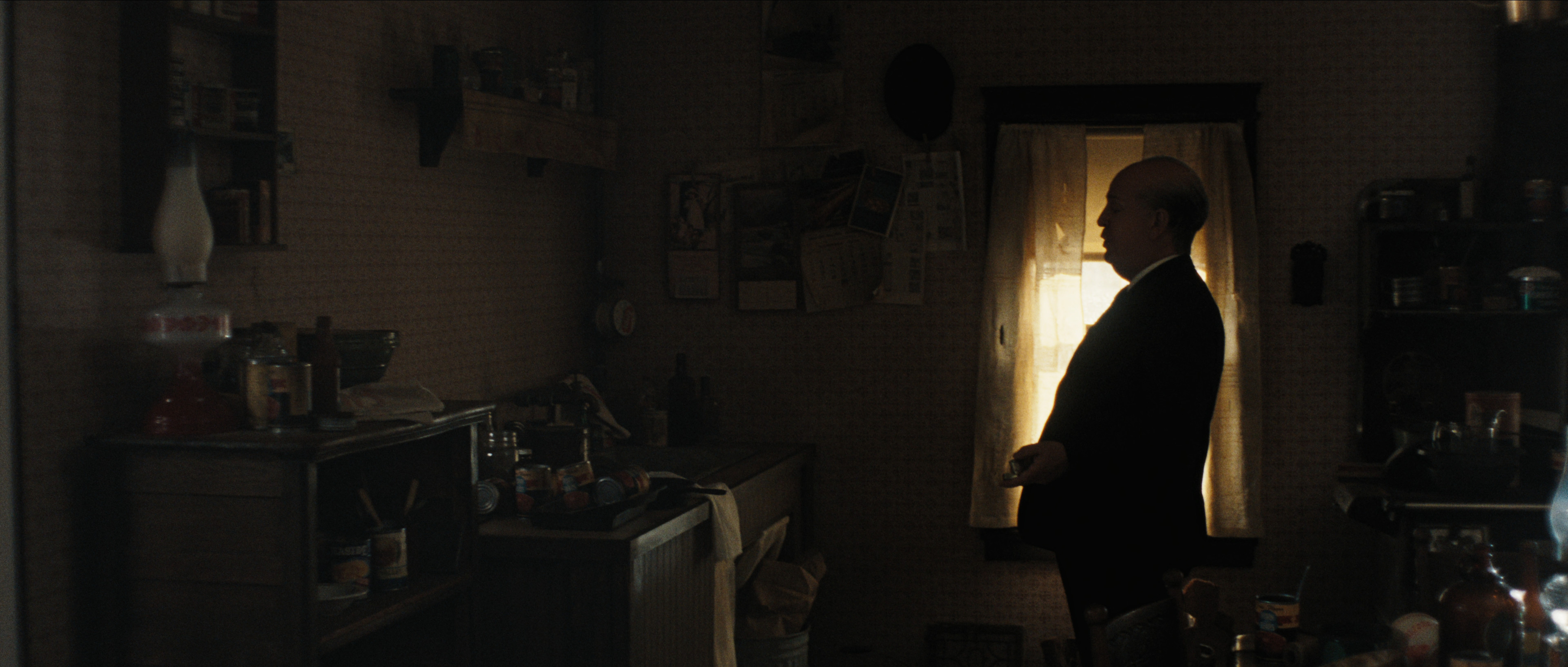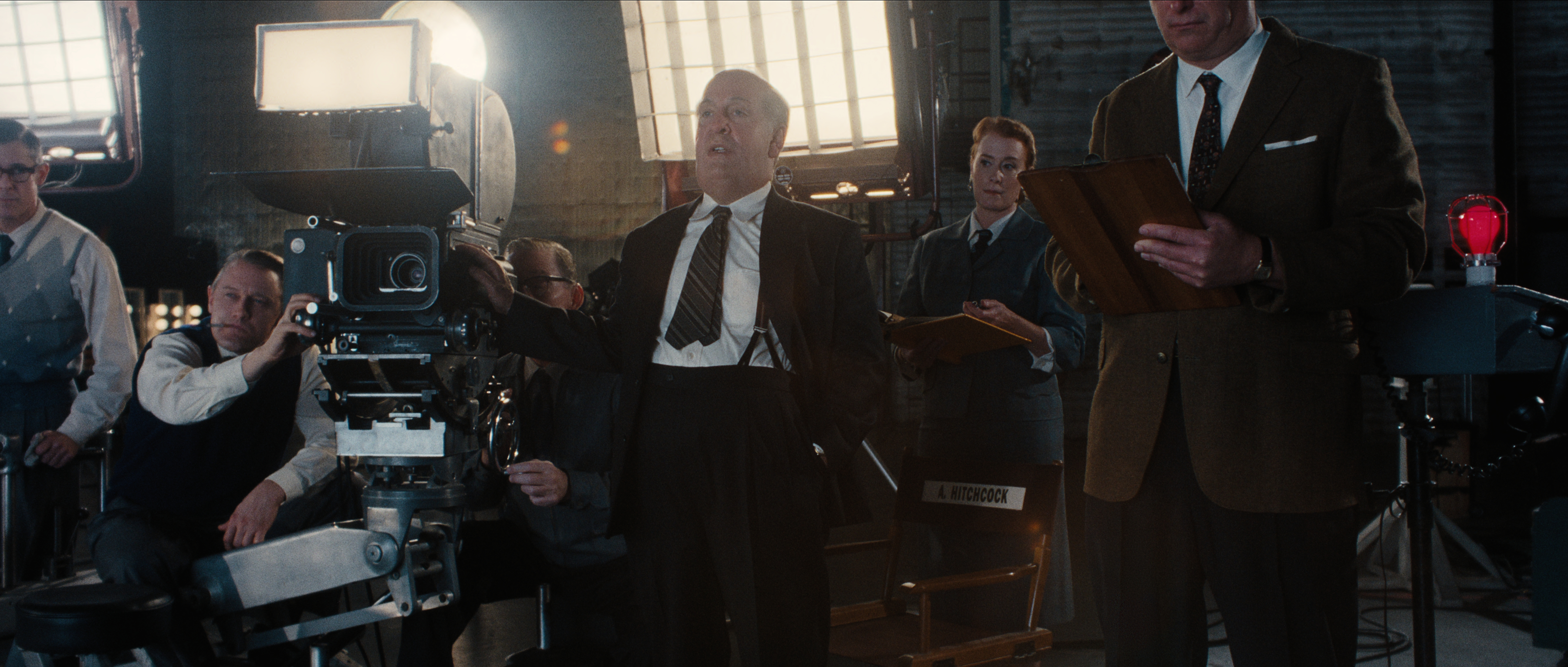The True Story of Anthony Perkins, the 'Psycho' Actor in Netflix's 'Monster: The Ed Gein Story'
Ryan Murphy's true crime series explores the filming of Alfred Hitchcock's classic horror film.


The latest installment of Ryan Murphy’s Monster franchise might initially focus on the 1950s Wisconsin-based serial killer Ed Gein, but the Netflix series extends beyond Gein’s immediate atrocities and into the Hollywood horror stories he inspired. One of those films is the classic Alfred Hitchcock thriller Psycho, which borrows Gein’s obsession with his mother to fuel the main character Norman Bates, who was played by actor Anthony Perkins.
Fictionalized versions of Hitchcock and Perkins appear in Monster: The Ed Gein Story, and the series also contends with Perkins’s real life and how the role of Norman Bates affected both his career and his psyche. Ahead, we’ll unpack what the true-crime drama got right about Perkins and what liberties it took in its portrayal.
Anthony Perkins was likely queer in real life.
Perkins never officially came out of the closet, given the era’s conservatism, but was known to have homosexual lovers, including fellow actor Tab Hunter, who is depicted in the show’s second episode. Hunter and Perkins allegedly dated for four years before Perkins filmed Psycho. While Monster: The Ed Gein Story depicts an argument about whether or not Perkins should take the role as the demise of their relationship, it’s not clear whether that happened in real life. Hunter called Perkins a “special part of my journey” in his memoir Tab Hunter Confidential: The Making of a Movie Star, which detailed his struggles with his sexuality during that time in Hollywood.
Monster: The Ed Gein Story shows Perkins with another homosexual lover as Psycho is released in theaters. In the series, his partner pleasures him in the theater, and after the movie is over, Perkins promptly breaks up with him by announcing that he’s going to marry a woman. While there is no record that Perkins was dating anyone during the filming of or immediately after the release of Psycho, it is believed that he dated dancer and choreographer Grover Dale through the 1960s.

Anthony Perkins, circa 1960.
Perkins later married a woman named Berry Berenson in 1973, with whom he had two kids—Longlegs director Oz Perkins and musician Elvis Perkins. In an interview with The Irish Times, Oz stated that his father’s sexuality was not something they discussed in their house. “The surprise about it was that it was no surprise. Right? The surprise was that we hadn’t been talked to about it,” he said in 2024. “I don’t know who would have that talk. Maybe, even today, I’m not sure how that conversation goes for people whose public lives don’t allow it. I don’t know how that conversation happens with children.”
Perkins did endure conversion therapy.
After filming a harrowing scene of Psycho, the Netflix series shows Perkins leaving the set for a therapy appointment. He meets with psychotherapist Mildred Newman and tells her that “the act of sodomy felt monstrous” and that he gets sick every time he sleeps with his boyfriend. Newman, a well-known proponent of conversion therapy, suggests he take care of this affliction with a lobotomy, electroshock, or conversion therapy.
Of course, we’ll never know the exact conversations that Perkins and Newman had, but it is reported that Perkins agreed to undergo conversion therapy. Soon after, he married Berenson.
Get exclusive access to fashion and beauty trends, hot-off-the-press celebrity news, and more.
Perkins felt typecast after acting in 'Psycho.'
The role of Norman Bates was a career-defining one for Perkins—for better or worse. Perkins allegedly felt that he was typecast as a villain in Hollywood. He even bought out the remainder of his Paramount contract to move to Europe and start his career afresh there. He made his European film debut in Goodbye Again in 1961, which earned him a Best Actor Bravo Otto nomination, a Bambi Award nomination, the Cannes Film Festival Award for Best Actor, and a David di Donatello Award for Best Actor.

Alfred Hitchcock (Tom Hollander) in Monster.
Hitchcock cast Perkins because of his closeted homosexuality.
In the Monster series, Hitchcock (played by Tom Hollander) takes Perkins (Joey Pollari) on a tour of the Psycho set, which is fashioned after the gruesome house where Gein stashed his victim’s body parts. Hitchcock tells Perkins that he knows about his “secret,” and that he cast him in the role of Norman Bates precisely because he is like him.
While we don’t have access to the conversations or private moments between the actor and director, another fictionalized account of this time period suggests something similar. The 2012 film Hitchcock hints that the titular director knew of Perkins’s sexuality, and that this led Hitchcock to believe Perkins had the traits to play a character who must conceal large parts of himself. The 2012 film also mentions Perkins’s close relationship with his mother to be a driving force for his casting. In one scene, Hitchcock’s wife Alma says, “Anthony Perkins. Imagine the duality he could bring to the role of Norman. The rage lurking behind that little boy grin. The winsome charm he uses to keep from being found out.”
The recreation of the 'Psycho' shower scene is much more brutal than the original.
In Ryan Murphy and showrunner Ian Brennan’s version of Psycho’s famous shower scene—in which Norman Bates, dressed up as his mother, stabs Janet Leigh’s Marion Crane—there’s nudity and a much more explicit stabbing than Hitchcock’s original version. That was by design. Monster’s executive producer Max Winkler told Variety, “We tried to put our own spin on it. The shower scene is significantly more brutal because our perspective of it is via Hitchcock, the monster for bringing this into movies that were not like that before.”
Winkler added that Perkins’s view of himself also played into the performance. “He himself felt like a monster because he had these feelings of being a homosexual and didn’t know who to talk to about it, and his own therapist told him that he should get a lobotomy,” Winkler said.

Hitchcock (Tom Hollander) leads a shoot in Monster.
'Monster: The Ed Gein Story' comments on pop culture’s obsession with true crime and horror.
The infamy of Ed Gein is crystallized in a moment of fourth-wall breaking during a scene with Anthony Perkins filming Psycho. Charlie Hunnam as Ed Gein appears and speaks directly into the camera, saying, “You’re the one who can’t look away.”
“He’s turning it on the viewer and saying, 'Are we the monsters because we’re watching this?',” Winkler said of the moment. “I know we are because we’re making it. But our point of view is it’s the monetization and fetishization of these really fucked up people, and it’s really heady.”

Radhika Menon is a freelance journalist, with a general focus on TV and film. Her cultural criticism, reporting, and commentary can be found on Vulture, ELLE, Teen Vogue, Bustle, and more. You can find her across all socials at @menonrad.